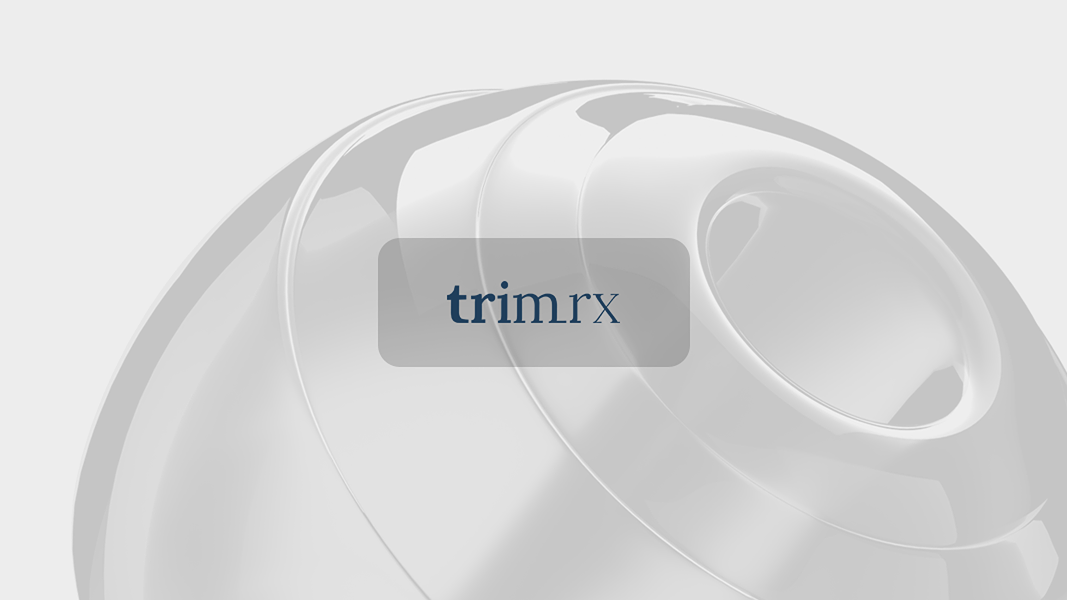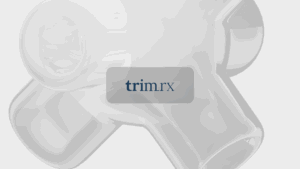Discovering What Foods Fill You Up But Are Low in Calories

Did you know that you can eat a mountain of food while consuming surprisingly few calories? This is not just a whimsical notion but a reality rooted in the concept of energy density. For those of us on a weight loss journey, understanding the science behind what foods fill you up but are low in calories can be transformative. In this blog post, we will explore a variety of foods that offer a satisfying volume without the hefty calorie count, helping you manage your hunger and achieve your weight loss goals effectively.
Introduction
We live in a time where the struggle with weight management is more common than ever. According to the Centers for Disease Control and Prevention (CDC), more than 70% of adults in the United States are considered overweight or obese. This statistic is alarming and highlights the need for effective strategies to combat weight gain. Many individuals embark on restrictive diets, only to find themselves battling cravings and hunger pangs.
But what if we told you that there are foods out there that can fill you up without filling out your calorie count? This article aims to guide you through the world of low-calorie, high-volume foods that can keep you satisfied while supporting your weight loss journey. By the end of this post, you will have a comprehensive understanding of how to incorporate these foods into your meals, along with practical tips and ideas that align with our mission at TrimRx: to help individuals embrace healthier lifestyles through personalized, medically supervised care.
We will delve into the concept of energy density, provide a list of low-calorie foods that are high in fiber and water content, and explore how to effectively incorporate them into your daily meals. Together, we’ll make sure you feel empowered to make choices that support your health goals.
Understanding Energy Density
Before we dive into specific foods, it’s essential to understand the principle of energy density. Energy density refers to the number of calories in a given volume of food. Foods that are low in energy density provide fewer calories per gram, allowing you to consume larger portions while keeping your calorie intake in check.
The Role of Fiber and Water
Two critical components contribute to low energy density: fiber and water. Foods high in fiber take longer to digest, keeping you feeling full for longer periods. Additionally, foods with high water content add volume without adding calories, which is why fruits and vegetables are often staples in weight management diets.
For instance, a cup of spinach contains less than 7 calories, while a cup of cooked pasta can exceed 200 calories. By choosing low-calorie foods, such as leafy greens, over high-calorie options, you can enjoy satisfying portions that help curb hunger.
Practical Implications
Understanding energy density and the importance of fiber and water opens up a world of possibilities for your meals. We can strategically fill our plates with more food that nourishes our bodies while maintaining a caloric deficit, which is vital for weight loss. This approach not only keeps hunger at bay but also ensures that we are consuming nutrient-dense foods that support overall health.
Now let’s take a closer look at specific foods that fill you up but are low in calories.
Foods That Fill You Up But Are Low in Calories
1. Leafy Greens
Leafy greens are the ultimate low-calorie food. Varieties such as spinach, kale, and arugula are nutrient-dense while being incredibly low in calories. For example, one cup of spinach has about 7 calories, making it perfect for salads, smoothies, or even sautéed as a side dish.
Incorporation Tip: Add a handful of spinach to your morning smoothie or mix kale into a salad for a filling, nutritious boost.
2. Vegetables
Most vegetables are low in calories but high in volume. Here are some standout options:
- Cucumbers: At just 18 calories per cup, cucumbers are refreshing and hydrating.
- Celery: A whole stalk of celery contains around 6 calories, making it an ideal crunchy snack.
- Brussels Sprouts: These mini cabbages are about 39 calories per cup and can be roasted or steamed for a delicious side.
Incorporation Tip: Use vegetables as the base for your meals. For instance, try a stir-fry loaded with colorful veggies or a hearty vegetable soup.
3. Fruits
Fruits can also serve as filling, low-calorie options. Here are some examples:
- Apples: A medium apple has about 95 calories and is high in fiber, making it a great snack.
- Berries: Strawberries (50 calories per cup) and raspberries (65 calories per cup) are rich in antioxidants and fiber.
- Watermelon: With a water content of over 90%, watermelon is incredibly hydrating and only about 46 calories per cup.
Incorporation Tip: Enjoy fruits as snacks, add them to yogurt, or incorporate them into smoothies for a natural sweetness.
4. Protein Sources
Incorporating lean protein can help keep you full longer. Here are some low-calorie protein options:
- Cottage Cheese: One cup of low-fat cottage cheese has about 163 calories and is packed with protein.
- Eggs: A large egg has approximately 70 calories, and they are versatile for breakfast or as a snack.
- Shrimp: This seafood option is low in calories (about 85 calories per serving) and high in protein.
Incorporation Tip: Start your day with an egg-based breakfast or include shrimp in a salad for a protein boost without excessive calories.
5. Whole Grains
While many grains can be calorie-dense, there are healthier options to consider:
- Oats: A half-cup of cooked oatmeal contains about 83 calories and is a great source of fiber.
- Quinoa: This grain is nutrient-rich and provides about 222 calories per cooked cup, making it a filling side dish.
- Brown Rice: While slightly higher in calories, brown rice offers fiber and nutrients; a half-cup cooked is roughly 109 calories.
Incorporation Tip: Use whole grains as a base for meals or in salads to create a filling dish that keeps you satisfied.
6. Snacks Under 100 Calories
Finding snacks that are low in calories yet satisfying can be a game-changer. Here are some ideas:
- Air-Popped Popcorn: With about 31 calories per cup, popcorn can be a great snack when seasoned lightly.
- Greek Yogurt with Berries: One cup of nonfat Greek yogurt has about 100 calories, and adding berries keeps it nutritious and filling.
- Veggies and Hummus: A cup of sliced veggies with two tablespoons of hummus is a satisfying, nutritious snack.
Incorporation Tip: Keep healthy snacks on hand to avoid reaching for calorie-laden options when hunger strikes.
Meal Planning with Low-Calorie Foods
Now that we’ve explored various foods that fill you up but are low in calories, let’s discuss how to effectively incorporate them into your daily meal plan.
Breakfast Ideas
- Veggie Omelet: Start your day with an omelet made from two eggs and packed with spinach, tomatoes, and onions.
- Overnight Oats: Combine oats with Greek yogurt and your choice of berries for a satisfying breakfast.
Lunch Options
- Large Salad: Build a salad with mixed greens, cherry tomatoes, cucumbers, and grilled chicken for protein.
- Vegetable Stir-Fry: Toss a variety of colorful vegetables with a lean protein source like shrimp or chicken.
Dinner Suggestions
- Zucchini Noodles: Swap traditional pasta for zucchini noodles topped with marinara sauce and vegetables.
- Grilled Fish with Asparagus: Enjoy a grilled fillet of fish paired with steamed asparagus for a light, filling meal.
Snack Ideas
- Apple Slices with Almond Butter: Enjoy apple slices with a thin layer of almond butter for a mix of fiber and healthy fats.
- Cottage Cheese with Pineapple: Combine low-fat cottage cheese with pineapple chunks for a sweet, protein-packed snack.
Conclusion
Incorporating foods that fill you up but are low in calories is a powerful strategy for effective weight management. By understanding the concept of energy density and the role of fiber and water in promoting satiety, we can make informed choices that support our health goals. Whether you are looking to lose weight or simply maintain a healthy lifestyle, filling your plate with nutrient-dense, low-calorie foods can help you feel satisfied without excess calories.
At TrimRx, we believe in a personalized approach to weight loss, combining advanced medical science with compassionate support. As you explore these low-calorie foods, consider how they can fit into your unique journey. Remember, every small step counts, and together, we can achieve sustainable weight loss through informed choices.
FAQs
What is energy density?
Energy density refers to the number of calories in a specific weight or volume of food. Foods that are low in energy density contain fewer calories per gram, allowing you to eat larger portions without exceeding your calorie goals.
How can I incorporate low-calorie foods into my diet?
Start by filling your plate with a variety of vegetables and fruits. Use leafy greens as a base for salads, add fruits to smoothies, and choose lean proteins and whole grains for balanced meals.
Are all low-calorie foods nutritious?
Not all low-calorie foods are created equal. Focus on whole, minimally processed foods that provide essential nutrients, such as vitamins, minerals, and fiber, while keeping calorie counts low.
Can low-calorie foods help in weight loss?
Yes, incorporating low-calorie foods into your diet can help you feel full and satisfied while maintaining a calorie deficit, which is essential for weight loss.
What are some quick low-calorie snacks?
Some quick low-calorie snacks include air-popped popcorn, sliced vegetables with hummus, and Greek yogurt with fresh fruit. These options keep hunger at bay without adding too many calories.
Keep reading
Does Eating Fruit Help with Weight Loss? Exploring the Sweet Science
Discover how eating fruit helps with weight loss. Learn the benefits, top fruits, and tips to boost your health journey today!
How Much Dalia to Eat for Weight Loss: A Comprehensive Guide
Discover how much dalia to eat for weight loss and unlock its health benefits. Explore serving sizes and tasty recipes to aid your journey!
Can We Eat Dark Chocolate in Weight Loss? Exploring the Facts
Wondering can we eat dark chocolate in weight loss? Discover how to enjoy this treat while staying on track with your diet. Learn more now!
Does Walking After Eating Help with Weight Loss?
Discover how walking after eating helps with weight loss! Learn its benefits for digestion and blood sugar control. Start your journey today!
Can I Eat Idli for Weight Loss?
Wondering if you can eat idli for weight loss? Discover its benefits, nutritional profile, and perfect pairings for a healthy diet!
Can I Eat Peanut Butter During Weight Loss? Exploring the Benefits and Best Practices
Wondering, ‘can I eat peanut butter during weight loss?’ Discover how to enjoy this creamy treat while reaching your goals. Learn more!
Can I Eat Bread for Weight Loss? Debunking the Myths and Exploring the Benefits
Wondering if you can eat bread for weight loss? Discover how to incorporate healthy bread into your diet while achieving your weight loss goals!
Is Not Eating Breakfast Good for Weight Loss?
Wondering if not eating breakfast is good for weight loss? Discover the latest research and tips for a healthier approach to your diet!
How to Eat Chana for Weight Loss: A Comprehensive Guide
Discover how to eat chana for weight loss with practical tips, delicious recipes, and nutritional insights. Start your journey to better health today!





